RAD™ PaintStrip Stripping Gel
R-A-D™ PaintStrip is the right choice for almost any solid stain, paint, paver sealer, stamped concrete sealer stripping project. R-A-D™ PaintStrip is eco-friendly, works fast (starts working within 5 minutes), and removes up to 5 layers of most paints in 30-45 minutes, and up to 15 layers in 24 hours. R-A-D™ PaintStrip stays wet for 24+ hours, allowing you to strip larger areas without having to reapply.
When & Where to use RAD™ PaintStrip
R-A-D™ PaintStrip does not contain any hazardous methylene chloride or NMP. R-A-D™ PaintStrip is non-flammable, non-combustible, and practically odor free. R-A-D™ PaintStrip can be used on interior and exterior surfaces including wood, brick, concrete, plaster, stone, metal, fiberglass, and more. Additionally, R-A-D™ PaintStrip clings well to vertical surfaces. Note: R-A-D™ PaintStrip is not needed to remove penetrating exterior deck and wood stains that are Transparent, Semi-Transparent, or Semi-Solid in appearance. To remove these deck and wood stain types, use the Restore-A-Deck Stain Stripper.
R-A-D™ PaintStrip Removes
- Solid Color Wood Stains, Paints, Varnishes
- Brick Paver Sealers that have turned white
- Stamped Concrete Sealers that have turned white
- Excessively Over-Applied Semi-Transparent and Semi-Solid Coatings
- Filming Acrylic Wood Stain Coatings such as Behr Wood Stains, Thompsons, Olympic, SuperDeck, Benjamin Moore ArborCoat, Valspar, PPG/Pittsburgh, and any other exterior wood and deck stains
DO NOT use on drywall, rubber, plastic, or vinyl.
R-A-D™ PaintStrip for Concrete ADVANTAGES
- PROFESSlONAL STRENGTH Fast-Acting Paint Stripping Gel
- Removes up to 15 layers of exterior wood and deck solid stains/paints, brick paver sealers, stamped concrete sealers, acrylic-based, varnish, stains, lacquers, and more in a single application
- Multi-Surface: Works on vertical and horizontal surfaces including wood, metal, masonry, and many more
- Stays Wet for 24+ Hours for Difficult Stripping Projects
- Eco-Friendly
- Non-Flammable & No Harsh Fumes
- No Methylene Chloride or NMP
Directions and Technical Info
Test Patch:
Before general use, test on a small area to determine compatibility, required dwell time, and coverage for desired results. For an estimated 5 or less coats, scrape a section of the area with a stripping tool after one hour of dwell time. If not easily down to wood after one hour, leave on longer and test again hourly. For 10 – 15 coats of paint, cover with plastic and wait 24 hours to test. For best results, cover the stripper with plastic and do not allow to dry.
DIRECTIONS:
- Shake well before use. Protect all areas not being stripped with plastic sheeting. Rubber gloves and safety glasses are recommended for eye and skin protection.
- Pour into a container and apply with a brush, roller (best applied with a 1 1/4” nap roller), or airless sprayer. Apply liberally – the stripper should cover the color of the stain. For best results and extended dwell times, cover stripper with plastic. Do not let stripper dry out, mist with water if you notice any dry areas. Refer to test area on dwell time before stripping. Test stripping a small area to ensure you are down to the substrate. If not, leave R-A-D™ PaintStrip on and let it do its job. R-A-D™ PaintStrip may or may not bubble. This will depend on the type of paint or sealer being removed. One gallon covers approximately 50-100 sq. ft. Best results are achieved when R-A-D PaintStrip is applied at temperatures between 60F and 80F.
- For best results, agitate with a stiff bristle brush and then remove by either scraping or pressure washing. Always pressure wash at an angle so that the water jet acts as a chisel.
- Let surface dry completely before refinishing. Clean all tools with soap and water.
- Dispose of paint or sealer waste in accordance with local, State, and Federal regulations.
COVERAGE:
R-A-D™ PaintStrip covers approximately 50-100 square feet per gallon of product. Coverage will vary on application method and substrate.
SAFETY CAUTION: See Full R-A-D™ PaintStrip SDS Contains benzyl alcohol, monoethanolamine and surfactants. Prevent eye contact. Avoid contact with skin and clothing. Wear safety goggles and gloves during use. Wash with soap and water after use. Keep container closed when not in use. FIRST AID: EYES: Immediately flush with water for at least 20 minutes. If wearing contact lenses, remove and continue flushing with water. Seek immediate medical attention. SKIN: Rinse with soap and water. Remove contaminated clothing and launder before reuse. If irritation develops, seek medical attention. SWALLOWED: If swallowed, rinse mouth out with water and give 1 glass of water if person is alert. Do not induce vomiting. Immediately contact a poison control center, physician, or hospital emergency room for instructions. KEEP OUT OF REACH OF CHILDREN. Max: voe g/L; Max Vapor Pressure of voe: 28.5 mm Hg. Non-photochemically Reactive. Less than 50% VOC. No Methylene Chloride or NMP I Eco-Friendly




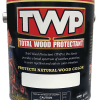

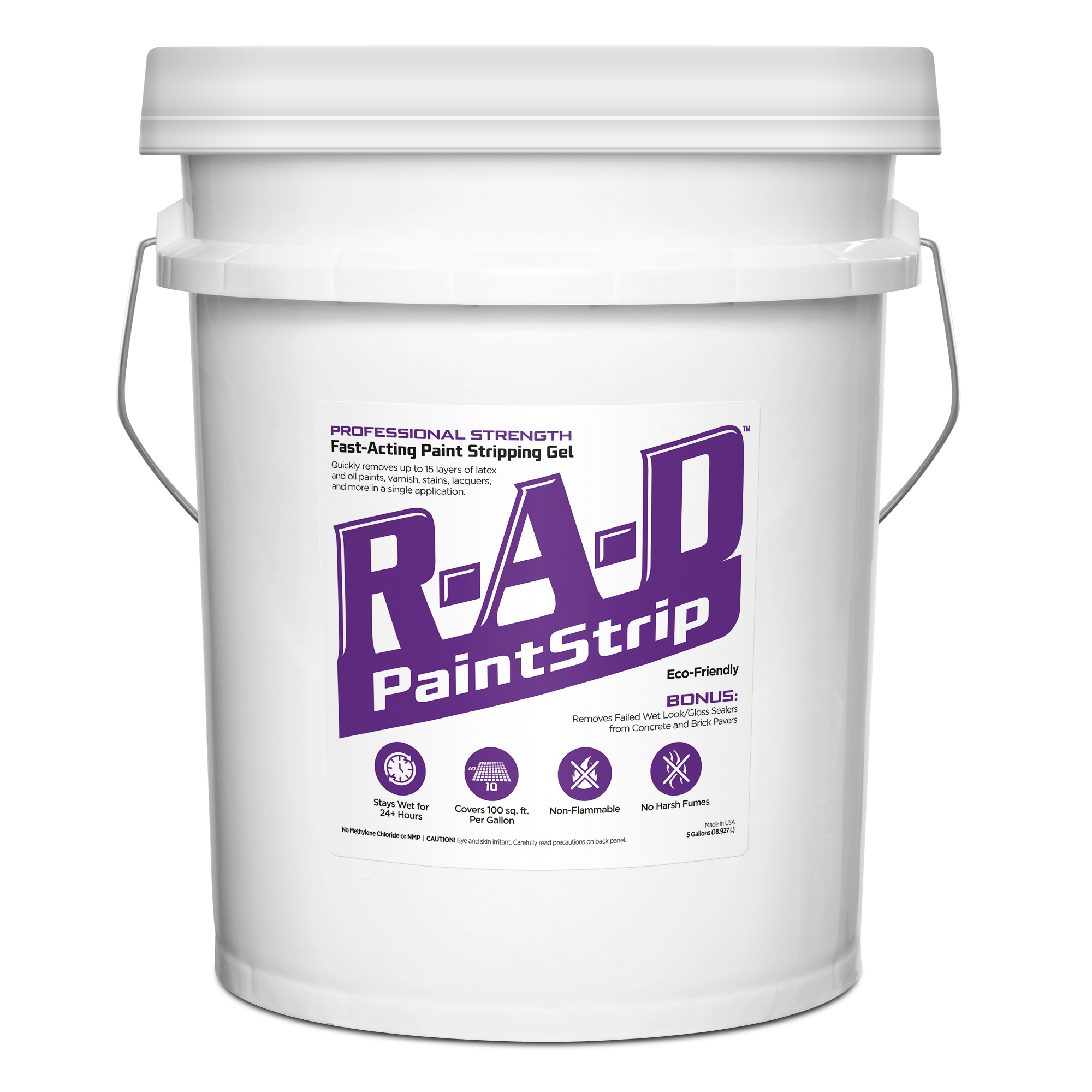
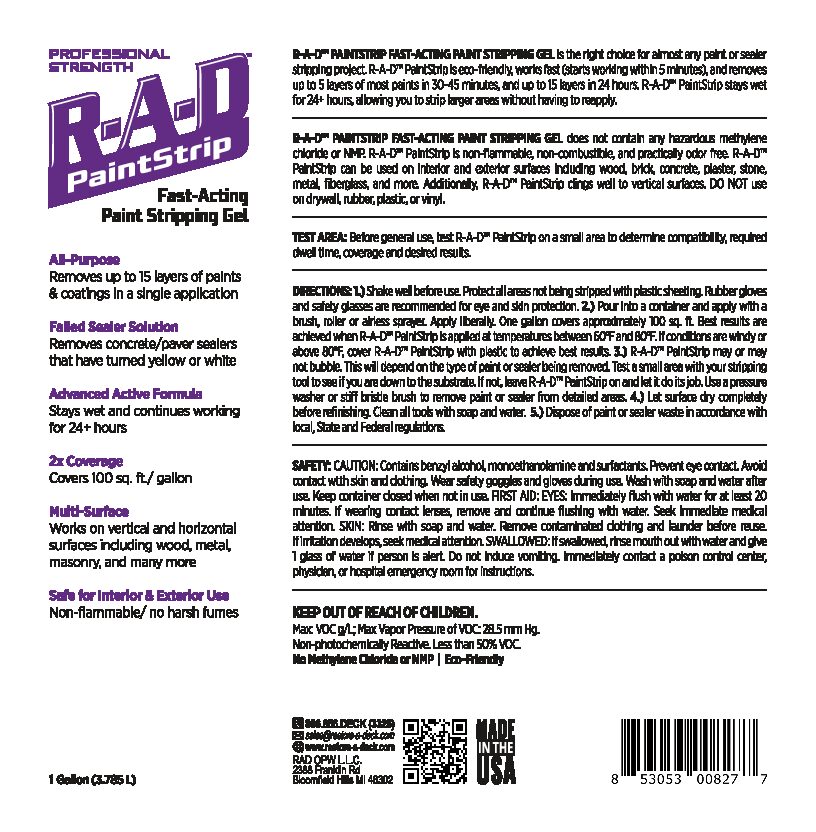
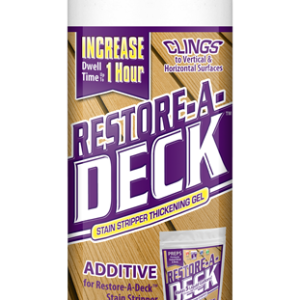
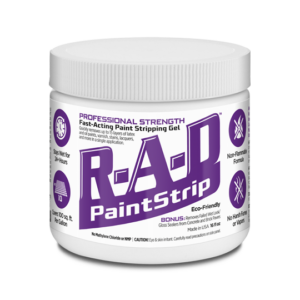
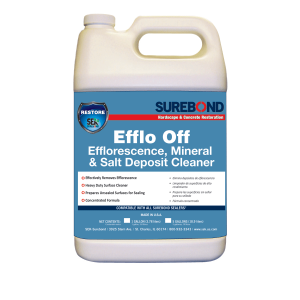
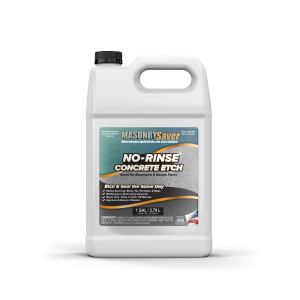
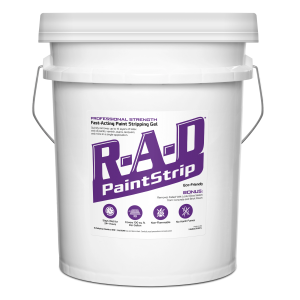
directions say can use airless sprayer. This is a gel correct. so best to brush on or use a roller? Thank you
Rollers are best for applying. It is a gel.
When I want to leave the gel on stamped concrete for more than an hour I’ve covered it with plastic, but sometimes the plastic really sticks to the gel and I find it more difficult to remove the gel afterwards. I see above that misting the cement with water is an option. Do you have any guidelines for when misting with water or covering with plastic would be the preferred approach? Also, do you have any tips on how to better use plastic coverings so it doesn’t dry/stick to the gel?
You do not have to cover it with plastic if leaving it on for a few hours. Typically plastic is needed if left on overnight. In your case misting with water once every 30-45 minutes would be easier.
Thank you that’s helpful. I do have a few places where the gel seems to have dried too much and power washing doesn’t fully remove the yellowish, almost gummy, residue. Should I just reapply the gel in those areas and do the process again? Also, I might be applying it to thinly – should I apply it so that there is sufficient – almost smeared – gel on the surface, to the point where the concrete is not visible, or not quite that thick?
Yes, redo as needed. Thicker is always better.
Is it ever helpful or recommended to add a 2nd coat 30 or 60 minutes after the first coat, or would that just mess up RAD’s process? Or is it better to add it thicker up front rather than add more along the way? After about 45 min the white gel is no longer visible and it starts to look more like the cement is covered in vegetable oil! Maybe that’s ok but I’m wondering I should add a 2nd coat to those areas.
Applying thicker and sitting longer is always the best way. Adding more along the way is not going to help. You may have to mist it with water to keep it from drying out. Test if working by scraping. Once it can scrap off, you can then pressure wash it off.
You will need to leave it on longer and pressure wash it off. Hosing off will not work. You can leave the stripper on for up to 24 hours. Cover with plastic if doing this.
You may also need to apply it thicker. I would suggest a heavy layer, leave it on for 2-6 hours, and then pressure wash off. If working well continue, if not, apply thicker and or leave on longer.
In some areas I’ve seen some of that sticky/goopy material that forms on the bottom layer of the old sealant I’m trying to remove. It sticks to the cement and is really challenging to remove, almost like it’s bonding. When it dries it leaves a white misty residue. It can happen if I leave RAD on for 60 minutes or if I leave it on for 2-3 hours, although the longer I leave it on the stickier it gets. I’ve used a powerful pressure washer, I’ve tried leaving RAD on longer and applying it thicker, and I’ve tried to do the process a 2nd time, and nothing seems to completely eliminate this very sticky layer. Adding mist almost seems to make it worse, like the water reacts with RAD to form this base layer of goop. It doesn’t happen everywhere on my patio, just select random squares which makes it doubly frustrating. Any suggestions for how to prevent this from happening? Thanks!
I believe what is going on is that you are removing the old sealer but you are left with the chalky substance which is a thin layer of residue from the stripping. We are going to ship you a gallon of our Cleaner Degreaser. This should remove this white residue.
Are Ken and Dean the same person and order?
Oh yes, sorry I go by both names. I’ll send details offline. Thank you.
We will send the Cleaner Degreaser.